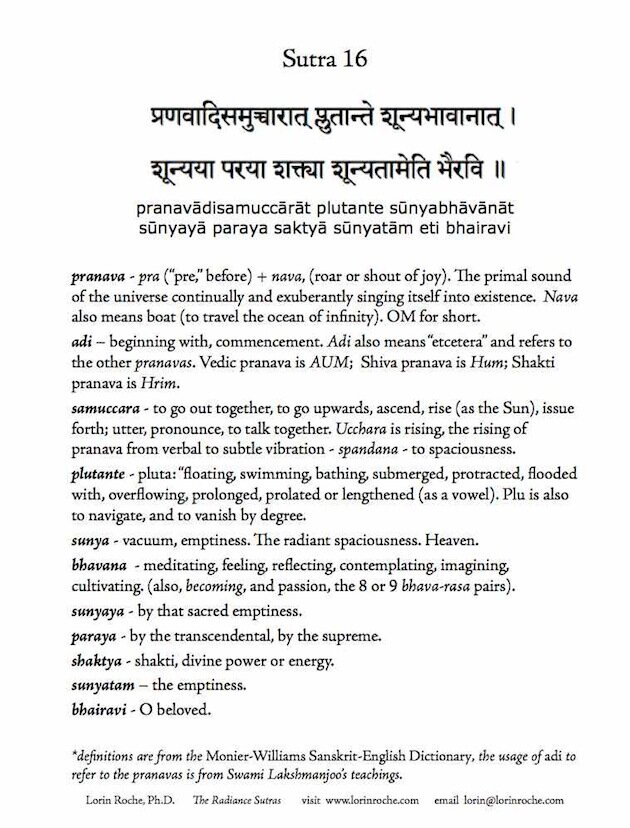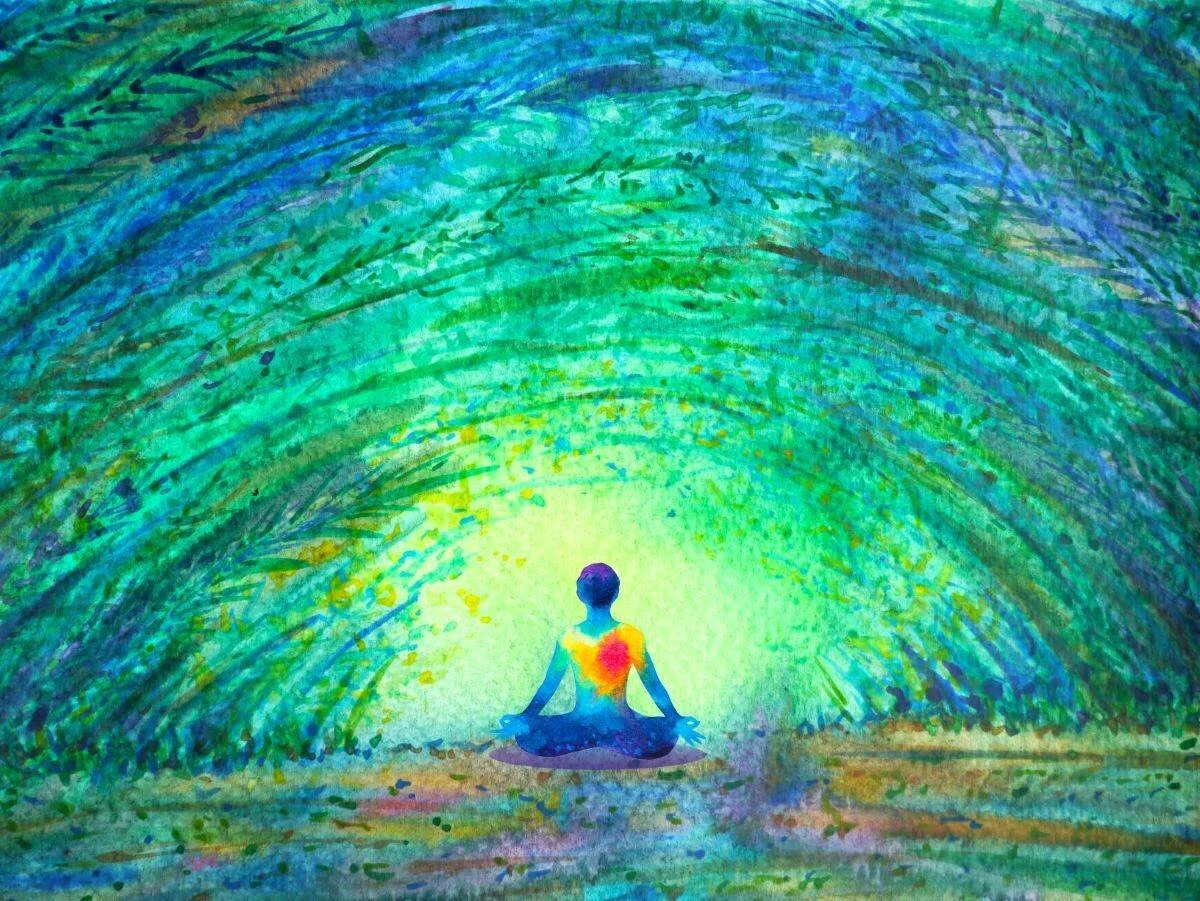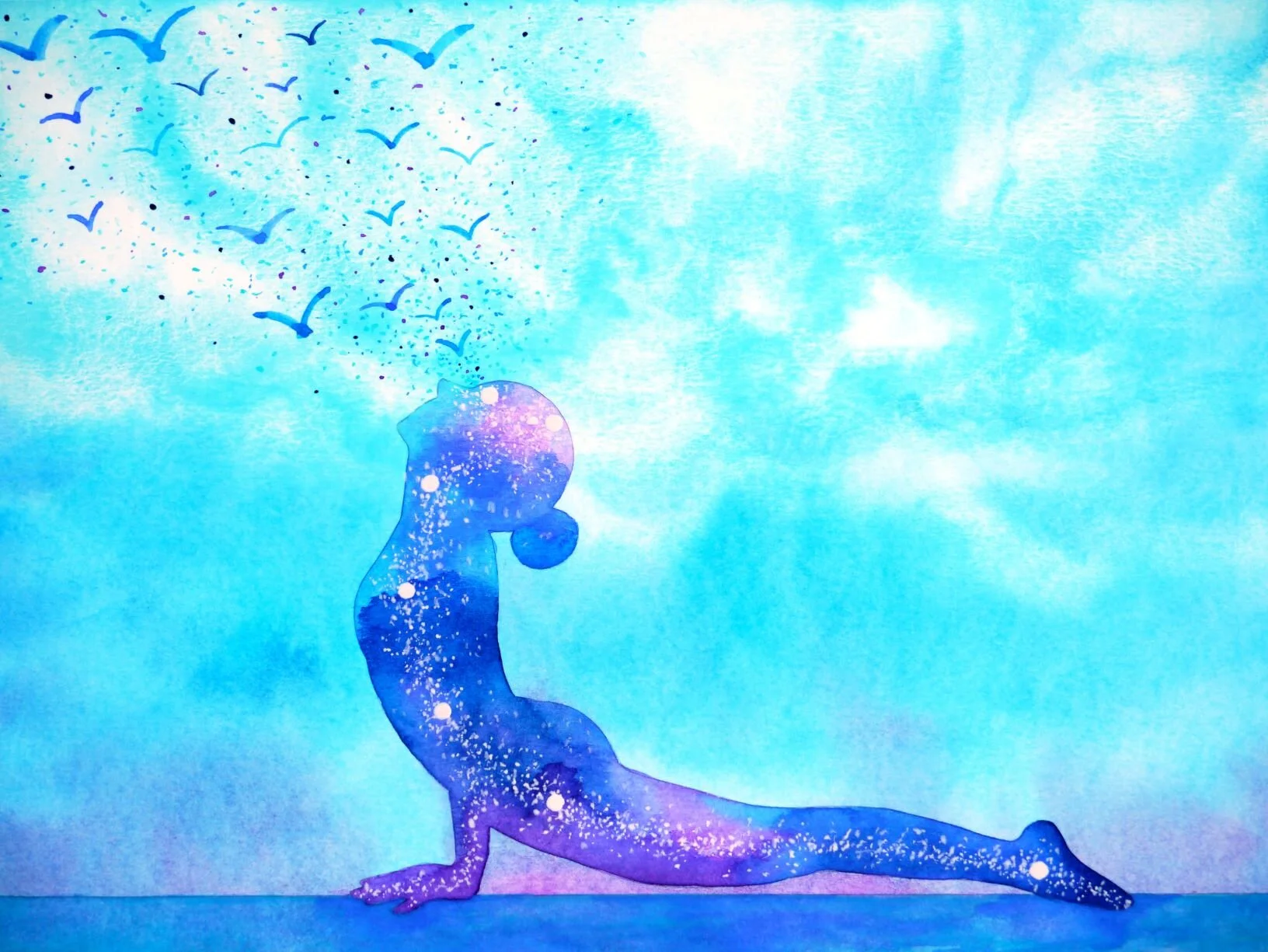The universe is an expanding shout of joy. Tune in, feel it humming in your body, hear it in the sounds of life all around you. In yoga, listen to the deep and blissful currents of life evolving itself. This is just one of the meanings of the mantra OM. Om is the original shout, a cry of such exuberance that galaxies were set spinning and suns were sparked into light. This astonishing thought permeates the Upanishads and other texts that serve as the inspiration for our practice of yoga.
The mantra OM is shorthand for, “The cosmos is song.” The Yoga Sutras (I.29) refers to OM as Pranava, from pra (before, forward) + nava, (sound, shout, exult)*; the primal shout of exultation. In other words, OM is the original OMG!
In The Radiance Sutras, Shiva is conversing with his beloved, the Goddess Devi, on the mystery inside pranava. In Sutra 16, Shiva says:
Here is the basic glossary of the words in the Sutra. To go deeper into each word, look in the Sanskrit sections.
praṇavādisamuccārāt
plutānte śūnyabhāvānāt |
śūnyayā parayā śaktyā
śūnyatām eti bhairavi || 39 ||
pranava aadi sam-ud-chaaraat
pluta–ante shoonya–bhaavanaat
shoonyayaa parayaa shaktyaa
shoonyataam eti bhairavi
Clearly, this is an instruction in mantra yoga.
For years, my version of Sutra 16 read like this, as a straightforward instruction in mantra:
Hum a sound, such as
ahhhhh . . . uuuuuuu . . . mmmmmm,
or hreeeeemmmm,
Or even the sound hum itself.
Bathe in the sound with infinite leisure . . .
Continue to listen while the sound
Dissolves into silence.
As the vibration fades
Into an imperceptible hum,
Follow it
Into the hum of the universe.
When yogis really love a word, they make up lots of nifty etymologies for it.
In various texts, Pranava is parsed as:
- pra, “the Prakriti the world evolved out of,” + nava, new, fresh – “The eternal that is always new.”
- pra, to evolve, + navam, boat, “the excellent boat to travel the ocean of infinity.”
- pra, the “spontaneous generosity of divinity;” prasad, + nava, new, “every time you chant the mantra you are taken to a new level of divinity.”
- prana + va, the voice of prana.
- Pranava, the breath of creation.
These all make sense in terms of the dynamics of practice. In the mantra yoga tradition I was trained in, beginning in 1968, the teaching was to let the mantra arise fresh and sound different each time. Let it have its own rhythm, let it find its own level. Don’t do anything; Be with the mantra, and allow it to carry you beyond itself into the embrace of space.
This is a very jazz-like approach, in which you let the shimmering power of space and silence play your body like an instrument . This feels like listening to music while getting a massage and floating in a hot tub. Pranava adi samuccara plutante all the way.
Later, in the 70’s, when I started coaching other meditation teachers and advanced practitioners, I was amazed to discover that many of them did not get the memo about improvisation. There was no playfulness in their practice. They were diligently working at the mantra, trying to pronounce it clearly, and sort of boring a hole in their brain, and boring themselves to death. And wondering why their lives had become arid and their health was suffering.
Depending on how you engage with pranava, the flow of prana in your body is shaped.
The style with which you listen to the mantra shapes the vibratory relationship between your annamaya kosha (your physical body,) and your pranamaya kosha (your life force or body of prana.) If you improvise with the mantra, it will change continually, make up its own meter, and in so doing, become endlessly interesting. It will also tend to change itself into the perfect sound to balance your body energies in this exact moment, enhancing your health and joy. The mantra will be always rising fresh. The free flow of pranava strengthens the free flow of prana.
One word of caution. If you use the mantra to block out thoughts, you may succeed – and as a result, lose track of where you are on the path of your life. If you use the mantra to dissolve desires, you might become passionless and lose your motivation. This might be just the ticket if you are a monk or nun, and have taken vows of obedience, poverty and celibacy, and cannot live your desires. But if you are not a nun or monk (clue: look down, are you wearing robes?) you need to stay in close touch with desire as your compass and motor.
One exciting realm where improvisation meets mantra is in the new wave of kirtan music pulsing around the world. I delight in the way the musicians are taking the ancient mantras and, with a daring spirit of innovation, finding the rock ‘n roll, the jazz, the hip hop in them. Each artist, each song, unfolds a different aspect of pranava and teaches me something new about listening to infinity.
* Dr. Christopher Key Chapple uses this etymology of Pranava in his translation of the Yoga Sutras, Yoga and the Luminous.












